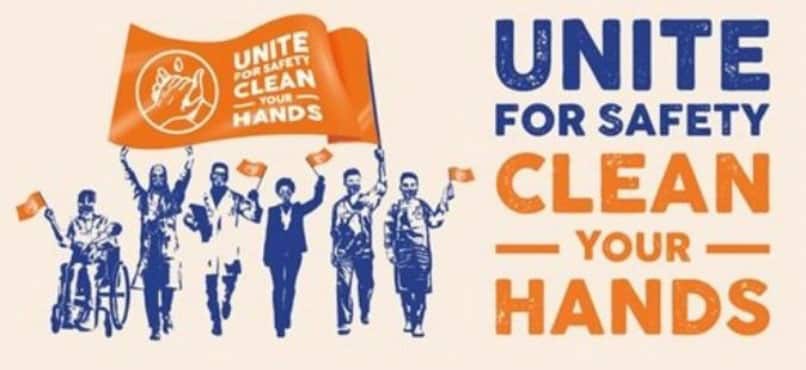Every year on May 4th the World Health Organization (WHO) promotes World Hand Hygiene Day, to remember the importance of this simple yet essential gesture for the prevention of transmissible infections, especially in the hospitals and nursing cares.
For May 5, 2022, the WHO chose this message: “United for Safety: sanitize your hands”.
Empowering hand hygiene and infection prevention and control can result in safer and more protected patients and healthcare workers.
Here at Nefrocenter we pay high attention to our patient and healthcare professionals’ hand hygiene.
Here are the recommendations from the Ministry of Health:
In fact, hand hygiene is essential to address the three major public health challenges of our time:
- Reduce SRAS-CoV-2’s circulation
- Prevent healthcare associated infections (HAIs)
- Fight antibiotic resistance.
How to sanitize your hands
Proper hand hygiene prevents the transmission of the microorganisms responsible for many infectious diseases, from the most frequent such as flu and colds, to the more severe ones such as healthcare-related infections. During the SARS-CoV-2 pandemic in particular, hand hygiene has been crucial to avoid transmission by contact and the possible spread and contraction of the new coronavirus.
For hand hygiene, ordinary soap is sufficient. If there’s no water around, alcohol-based hand sanitizers can be used instead.
If you use soap, it’s important to rub your hands for at least 40-60 seconds. If soap is not available, a hydroalcoholic solution can be used instead, rubbing the palms, the backs of the hands, the fingers, and the nails for at least 20-30 seconds. The products available on the market for disinfecting the hands if soap or water are not around (medical-surgical devices and authorized biocides with microbicidal action) must be used when the hands are dry, otherwise they’ll not be effective.
It’s important to sanitize the hands:
Before
- Taking a medicine for yourself or giving it to others
- Touching eyes/nose/mouth (e.g., for smoking, wearing contact lenses, brushing your teeth, etch.)
Before and after
- Having used a toilet
- Having touched a sick person
- Having medicated or touched a wound
- Having changed a baby’s diaper
- Having touched an animal
- Having handled food, especially if raw
After
- Having been in a public place (shops, clinics, stations, gyms, schools, movie theatres, buses, offices, etc.) and when you come back home in general.
- Having touched garbage
- Having touched banknotes and coins.
Furthermore, it’s a good habit to cough/sneeze into the crook of the elbow, in order not to contaminate the hands, which can be the vehicle of their own microorganisms by touching things like, for example, a cellphone, a door handle, etc.
It’s also recommended to use (possibly eco-sustainable) disposable handkerchiefs to blow your nose, then dispose them in the trash and wash your hands after use.
Hand hygiene in healthcare environments
Hand hygiene plays an important role for our health and for that of other people, even in healthcare environments.
Healthcare associated infections (HAIs) are a global problem affecting approximatively 7-10% of the patients, depending on the country. In Italy, it’s estimated that 5-8% of hospitalized patients end up contracting a hospital infection (source: Istituto Superiore di Sanità).
The practice of hand hygiene in the healthcare field prevents HAIs and the spread of potentially pathogenic microorganisms both in the healthcare setting and in the community.
Prevention of HAIs is also fundamental for reducing drug-resistant infections and the spread of the resistant microorganisms that cause them. Not all HAIs are preventable, but it’s estimated that about half of them are.
In all places of assistance or care (points of care), it’s important to wash your hands with soap and water or sanitize them with a hydroalcoholic solution.
Inside the Point of care (POC):
- It’s possible to meet three elements: the patient, the healthcare professional, and the assistance or therapeutic treatment, which involves contact with the patient or the surrounding environment.
- Hand hygiene must be performed in the 5 moments that involve assistance or care indicated by the World Health Organization.
- Hand hygiene products (like alcohol-based solutions, soap and water, towels, or preferably single-use paper towels) must be easily accessible and as close as possible to the POC, in order to allow the patient with sanitized hands to easily leave the area.
In the race to meet the deadlines set for achieving the sustainable development goals (SDGs) or Agenda 2030, the WHO has declared 2021 the “Year of Health Professionals” to give credit to the value and the particular contribution of these public health professionals in the context of the SARS-CoV-2 pandemic.

